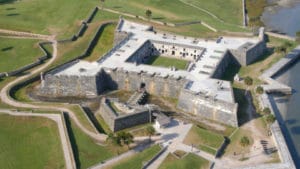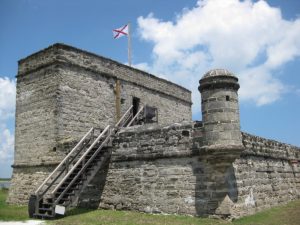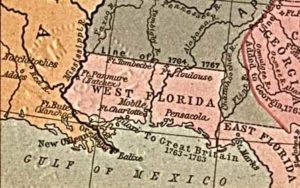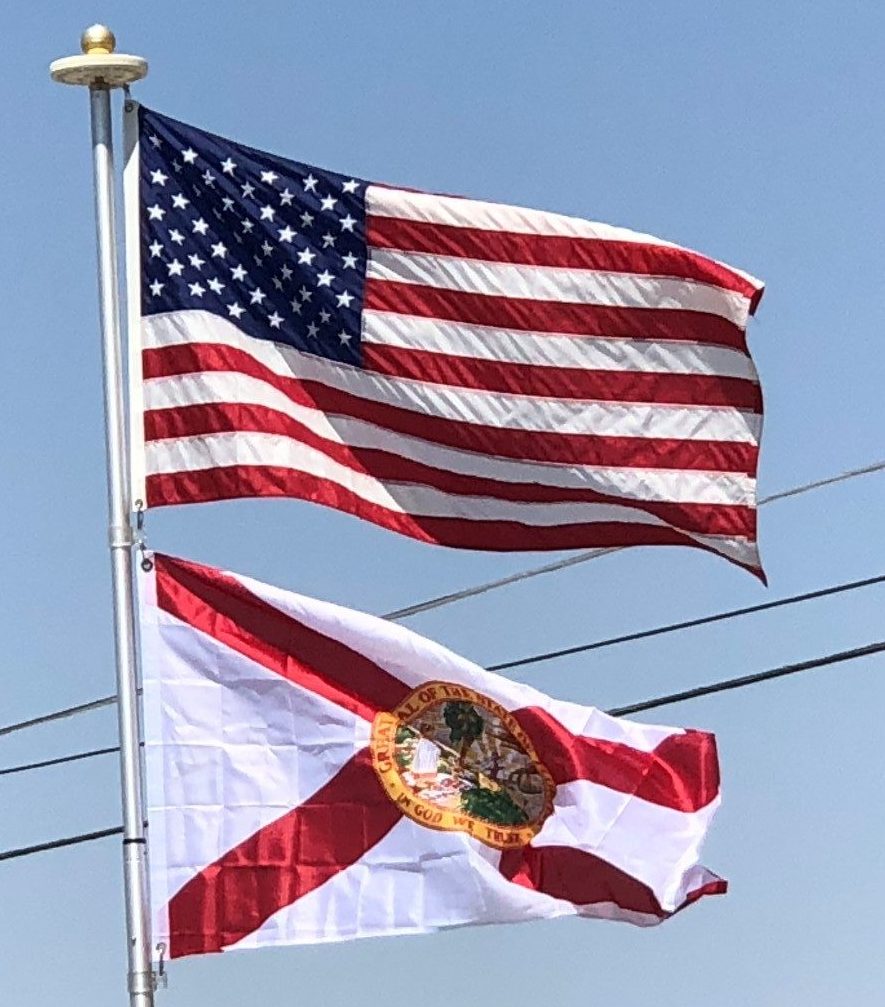
Spain built the Castillo de San Marcos in 1672 and Fort Matanzas in 1742 to defend Florida’s capital city from attacks, and to maintain its strategic position in the defense of the Captaincy General of Cuba and the Spanish West Indies.

In 1763, Spain traded Florida to the Kingdom of Great Britain for control of Havana, Cuba, which had been captured by the British during the Seven Years’ War. It was part of a large expansion of British territory following their victory in the Seven Years’ War. A large portion of the Florida population left, taking along most of the remaining indigenous population to Cuba. The British soon constructed the King’s Road connecting St. Augustine to Georgia. The road crossed the St. Johns River at a narrow point called Wacca Pilatka, or the British name “Cow Ford,” ostensibly reflecting the fact that cattle were brought across the river there.
East Florida and West Florida in the British Period (1763–1783):
The British divided and consolidated the Florida provinces into East Florida and West Florida, a division the Spanish government kept after the brief British period. The British government gave land grants to officers and soldiers who had fought in the French and Indian War in order to encourage settlement. In order to induce settlers to move to Florida, reports of its natural wealth were published in England. A large number of British settlers who were described as being “energetic and of good character” moved to Florida, mostly coming from South Carolina, Georgia and England. There was also a group of settlers who came from the colony of Bermuda. This would be the first permanent English-speaking population in what is now Duval County, Baker County, St. Johns County and Nassau County. The British built good public roads and introduced the cultivation of sugar cane, indigo and fruits as well as the export of lumber.

As a result of these initiatives, northeastern Florida prospered economically in a way it never did under Spanish administration. Furthermore, the British governors were directed to call general assemblies as soon as possible in order to make laws for the Floridas and in the meantime they were, with the advice of councils, to establish courts. This would be the first introduction of much of the English-derived legal system which Florida still has today including trial by jury, habeas corpus and county-based government. Neither East Florida nor West Florida would send any representatives to Philadelphia to draft the Declaration of Independence. Florida would remain a Loyalist stronghold for the duration of the American Revolution.
Spain regained both East and West Florida after Britain’s defeat in the American Revolution and the subsequent Treaty of Versailles in 1783, and continued the provincial divisions until 1821.
Joining the United States and Indian Removal:
Defense of Florida’s northern border with the United States was minor during the second Spanish period. The region became a haven for escaped slaves and a base for Indian attacks against U.S. territories, and the U.S. pressed Spain for reform.
